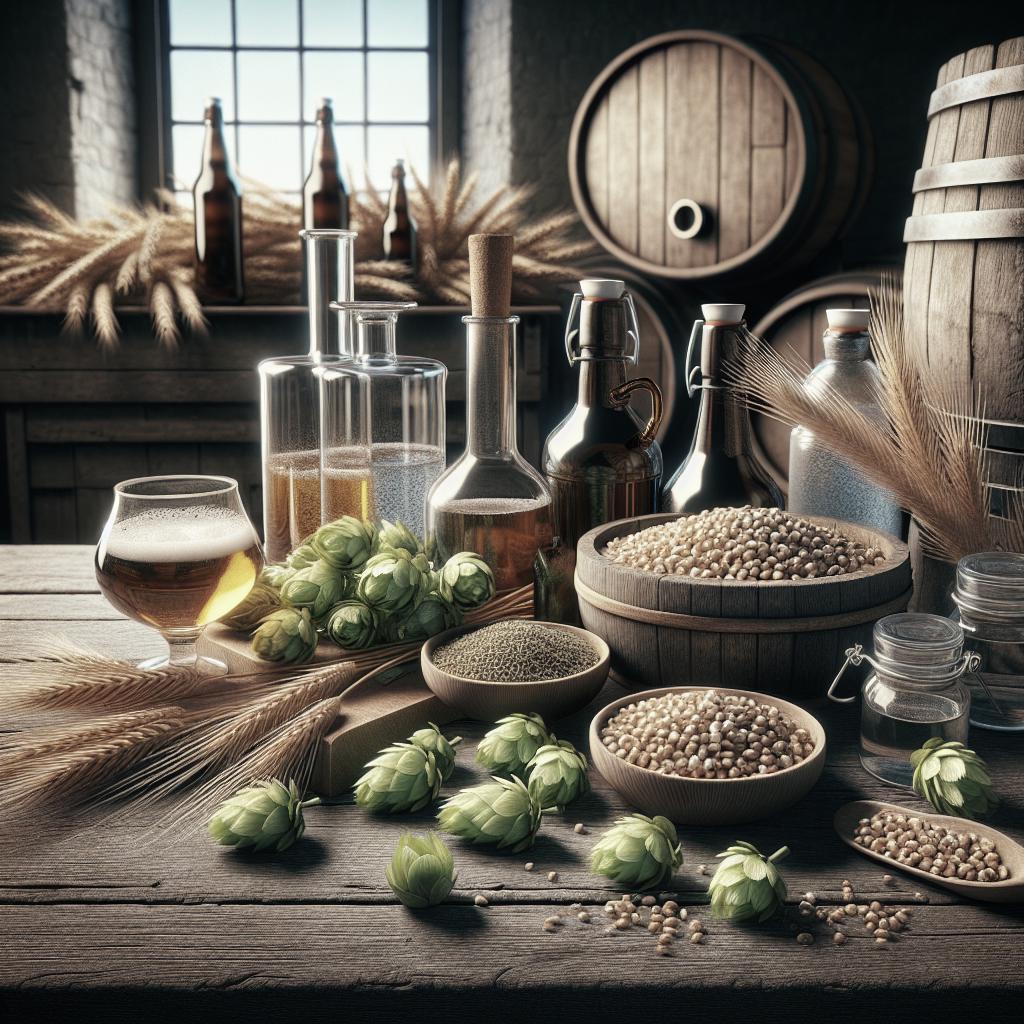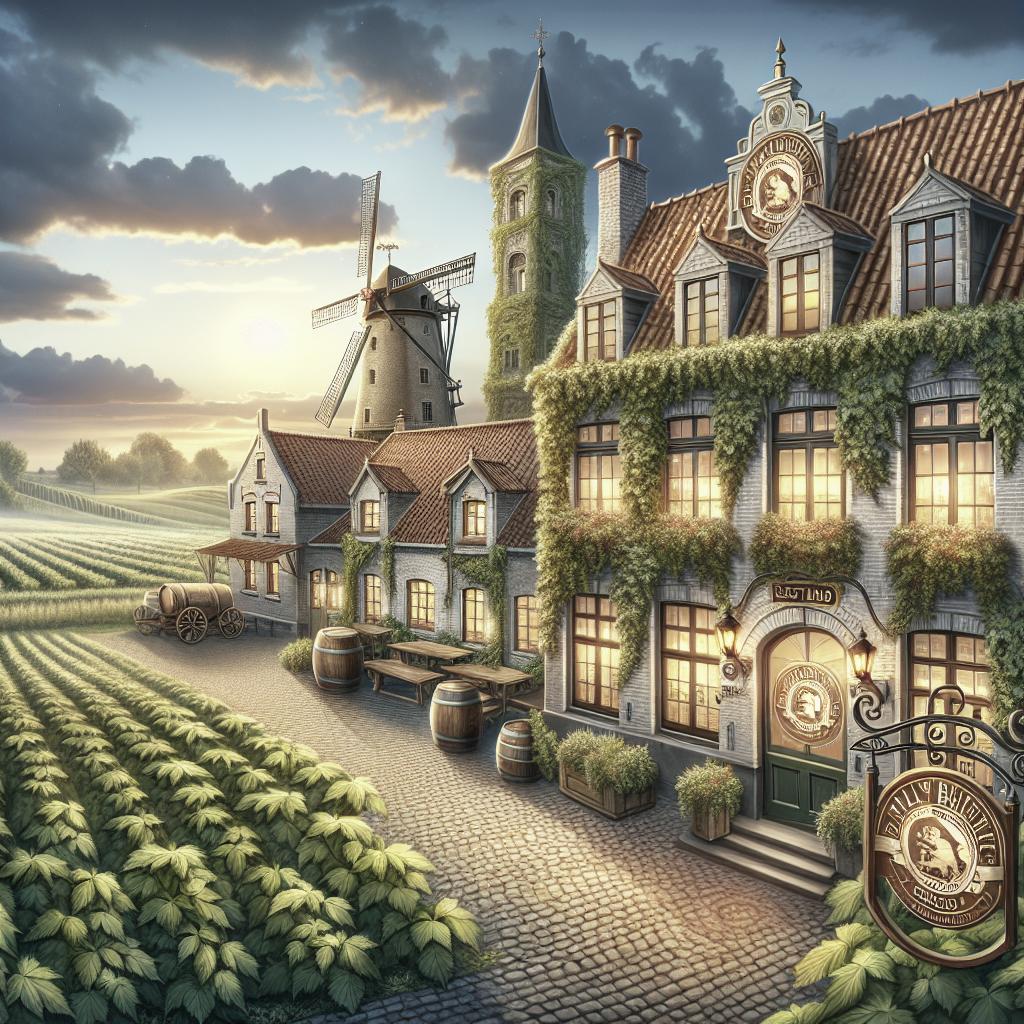“`html
The Traditional Ingredients in Belgian Beer
Belgian beer, renowned for its rich history and intricate brewing techniques, offers a variety of flavors unrivaled by any other brewing tradition. From the abbey ales to the inviting sour ales, these beers are defined by a distinct blend of ingredients and brewing practices. This article delves into the traditional elements that make up some of Belgium’s most celebrated beer styles. We explore various categories, including the classic Dubbel, Tripel, and the unique farmhouse ales. Discover the role of ingredients like malt, hops, yeast, and adjuncts in crafting these beloved beverages. As we journey through this world of Belgian brews, we gain insight into the cultural and historical significance of each style, showcasing the diversity and complexity of their components. Whether you’re a beer enthusiast or a curious newbie, understanding these traditional ingredients is essential to appreciating the artistry of Belgian brewing.
Abbey Ales
Abbey ales are a category of beers brewed in the tradition of Trappist monks, albeit by secular breweries. These ales possess a rich history, often rooted in monastic brewing practices. The essential ingredients typically found in abbey ales include a generous dose of malt, which imparts a sweet, caramelized foundation. The malt profile is crucial, providing the scaffolding upon which the flavor complexity is built.
Hops play a supporting yet significant role, balancing the malt’s sweetness with bitterness and aromatic notes. Specific yeast strains are often the star of the show, imparting unique esters and phenolic flavors characteristic of Belgian ales. Yeast fermentation conditions further influence the final taste, leading to a beer that is both complex and harmonious. Adjuncts like spices or candy sugar might be used to enhance the beer’s profile, reflecting the brewer’s style.
Dubbel, Quadrupel, and Belgian Strong Dark Ale
Dubbel, Quadrupel, and Belgian Strong Dark Ale are celebrated for their deep, robust flavors. The foundation of these beers is the selection of dark malts, which bring forth flavors of toffee, chocolate, and dark fruits. These malts give the beer its characteristic depth and warm, rich color.
The yeast strains used are as vital as the malt blends, adding layers of spiced and fruity notes. Belgian yeast is renowned for fermenting under warm conditions, yielding those iconic fruity esters and phenolic flavors. Additionally, brewers often include spices like coriander or nutmeg to accentuate the inherent richness, while a touch of Belgian candy sugar might be added to increase alcohol content without adding heaviness. This balance of ingredients creates a luxurious beer experience that is bold yet refined.
Tripel
Tripels are lighter in color compared to Dubbels yet boast a similarly intricate flavor profile. The cornerstone of the Tripel’s construction is pale malt, which provides the necessary sugars for fermentation without the robust flavors associated with darker malts.
The liberality of hops in Tripels steps up to bring a crisp bitterness that balances the ample malt sweetness. This hop character also imparts floral and herbal aromas. The yeast used in Tripels is chosen for its ability to contribute spicy and fruity esters, enhancing the beer’s overall complexity. Sometimes, sugar adjuncts are included to boost the alcohol content while maintaining the beer’s light body. The result is a golden brew that marries high alcohol content with a refreshing finish.
Farmhouse Ales
Farmhouse ales originate from rustic brewing traditions, traditionally made during the colder months for consumption during the summer. These beers are known for their refreshing and spirited profiles. Key ingredients include a blend of malts tailored to create a slightly sweet and earthy base.
The character of farmhouse ales is largely influenced by the yeast strains, often wild or mixed cultures, adding a distinct funky and sometimes tart character. This unpredictability in yeast behavior yields flavors that can vary greatly from batch to batch, lending each brew its unique signature. Hops are typically used sparingly, allowing the malt and yeast to shine, but they contribute to the beer’s overall balance with their subtle herbal notes.
Saison and Bière de Garde
Saisons and Bière de Garde are prominent subcategories of farmhouse ales, each with its distinct character. Saisons are traditionally brewed with a variety of malts and adjuncts, leading to a broad spectrum of flavors, from mildly tart to vigorously spicy. Yeast strains play a critical role, endowing the beer with complex, earthy aromas and a characteristic dryness.
Bière de Garde, on the other hand, leans towards malt-forward profiles, often using caramel or Munich malts to achieve a deeper flavor. The beer is typically aged for some time, allowing the flavors to mature and integrate. Both styles utilize hops more for their preservative qualities than for bitterness, ensuring the beer remains drinkable over extended periods. This use of traditional ingredients underscores the adaptability and historical significance of these beers within Belgian brewing culture.
Other Belgian Ales
The category of Belgian ales is incredibly diverse, extending beyond the more famous styles into niche variants that hold their own charm. Examples include Dubbel, Tripel, and Abbaye styles, as well as less commonly seen varieties like Belgian Stout or Belgian Barleywine.
Despite their differences, these ales share a devotion to using traditional Belgian yeast strains, necessarily impacting the flavor profile with their fruity and spicy esters. While malt and hop varieties may vary, the unique yeast character remains a defining feature across the spectrum. Special grains might also be incorporated to adjust the mouthfeel or add nuanced layers of flavor, giving brewers ample room for creativity while staying rooted in tradition.
Belgian Strong Pale Ale and Belgian Blonde
Belgian Strong Pale Ale and Belgian Blonde Ale are two popular styles with devoted followings. The Strong Pale Ale is recognized for its golden appearance and balanced mix of spicy, floral hops with a pronounced malt sweetness. The yeast strains used impart subtle hints of fruit and pepper, creating a drink that’s as refreshing as it is potent.
On the other hand, the Belgian Blonde Ale offers a lighter, more approachable experience. Basic ingredients like pale malt, a touch of lightly kilned malt, and gentle hop varieties are used to maintain the beer’s clear and clean character. The yeast, as always, plays a vital role—contributing a soft, fruity sweetness that’s critical to the style’s identity. These ales exemplify the Belgian ability to harness complex yeast flavors while allowing for a more restrained malt and hop presence.
Belgian Pale Ale
Belgian Pale Ales are distinguished by their approachable malt backbone and mild bitterness. These beers traditionally use pale malts, which provide a toasty, biscuity flavor, setting them apart from their more robust counterparts.
The hops are modest in quantity, used more to complement and accentuate the malt profile rather than to dominate. Special yeast strains contribute to the nuanced fruity and spicy notes characteristic of Belgian brewing. These ales may also include adjuncts like crystal malt to give a bit of caramel sweetness and a richer color. Altogether, Belgian Pale Ales embody a balanced, easy-drinking style, perfect for introducing newcomers to the complexity of Belgian beer.
Witbier
Witbier, or “white beer,” is a beloved Belgian style known for its pale and cloudy appearance, often brewed with wheat in addition to barley malts. The wheat lends a hazy look and a creamy mouthfeel, distinct characteristics of Witbier.
Coriander and orange peel are signature adjuncts, adding a citrusy and slightly spicy dimension to the beer. The notable yeast profile contributes a mild tartness and additional spice notes, making Witbier a refreshing choice, particularly in warm weather. The balanced use of hops further enhances the citrusy and herbal qualities, creating a vibrant and crisp ale that stands out in the Belgian beer landscape.
Sour Ales
Belgian sour ales are an adventurous category, favored for their unique taste, resulting from the secondary fermentation process using wild yeasts and bacteria. This method imparts complex acidity and diverse flavor profiles.
Ingredients like wheat and aged hops are commonly used to achieve these sour notes. The production of sour ales often involves barrel aging, where the beer absorbs flavors from the wood and develops a deep, nuanced character over time. These ales offer a sensory experience unlike any other style, as their tartness and effervescence cater to seasoned beer aficionados and curious explorers alike.
Lambic and Gueuze
Lambics represent some of the most traditionally crafted beers in Belgium, brewed through spontaneous fermentation, which invites wild yeast and bacteria from the environment. These beers use simple malts and more aged hops that contribute necessary preservatives but little bitterness.
Gueuze, a blend of young and old Lambics, is celebrated for its complex balance of sour, sweet, and funky flavors, resulting from prolonged fermentation and aging. Like many Belgian specialties, Lambics and Gueuze rely on regional ingredients and local cultures, showcasing the importance of their geographical origin in shaping their distinct flavor profiles.
Flanders Red and Flanders Brown
Flanders Red and Flanders Brown, known as “Oud Bruin”, are types of sour ales polished through lengthy maturation periods. The red variant is slightly lighter, offering a complex bouquet of sour cherries, plums, and spices, supported by a tannic malt body from the caramel malts utilized.
In contrast, Flanders Brown presents deeper malt notes of chocolate and caramel, paired with a mild, balancing sourness achieved through controlled fermentation. The symphony of grains, hops, and yeast, combined with aging techniques, results in a rich, harmonious beer that encapsulates the length and breadth of Belgian tradition.
Final Thoughts
| Beer Style | Key Ingredients | Flavor Profile |
|---|---|---|
| Abbey Ales | Malt, hops, yeast, spices | Sweet, balanced, complex |
| Dubbel/Quadrupel/Belgian Strong Dark Ale | Dark malts, Belgian yeast, spices | Rich, toffee, fruity |
| Tripel | Pale malt, hops, Belgian yeast, sugar adjuncts | Spicy, fruity, potent |
| Farmhouse Ales | Malt, wild yeast, minimal hops | Funky, earthy, refreshing |
| Saison/Bière de Garde | Variety of malts, yeast, adjuncts | Spicy, malty, matured |
| Belgian Strong Pale Ale/Blonde | Pale malt, Belgian yeast, hops | Floral, balanced, subtle sweetness |
| Belgian Pale Ale | Pale malt, mild hops, Belgian yeast | Bready, fruity, approachable |
| Witbier | Wheat, coriander, orange peel, yeast | Citrusy, spiced, refreshing |
| Sour Ales | Wheat, aged hops, wild yeast | Tart, complex, effervescent |
| Lambic/Gueuze | Simple malts, aged hops, wild yeast | Sour, funky, balanced |
| Flanders Red/Brown | Caramel malts, yeast, hops | Cherry, chocolate, nuanced |
“`


